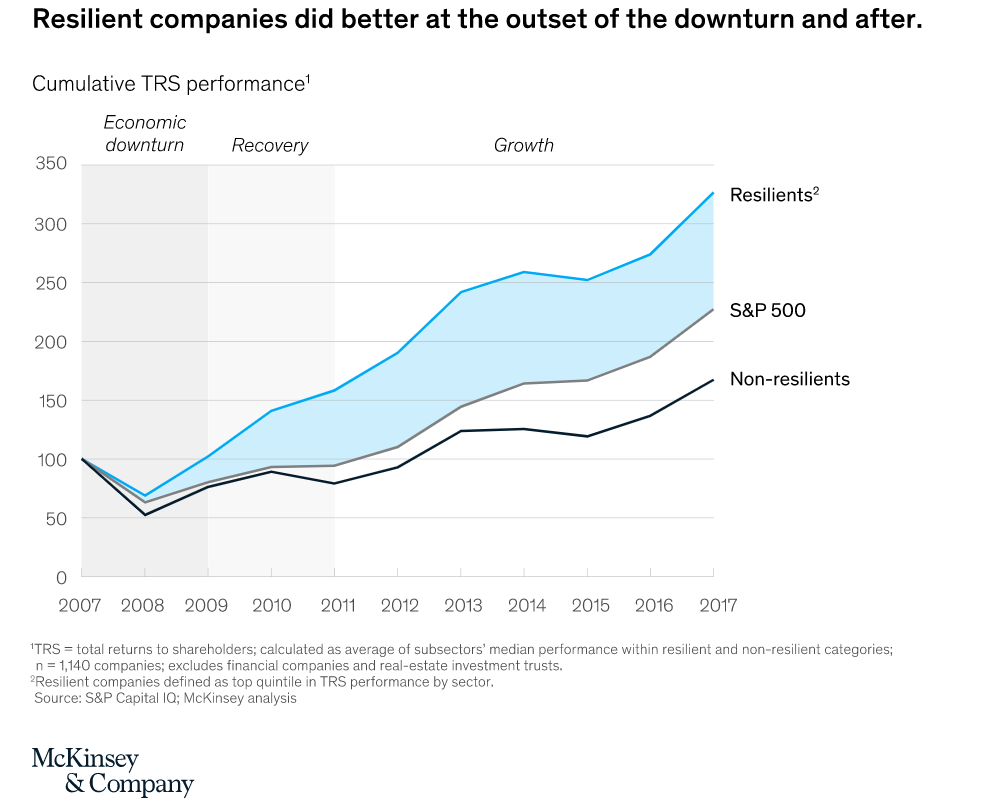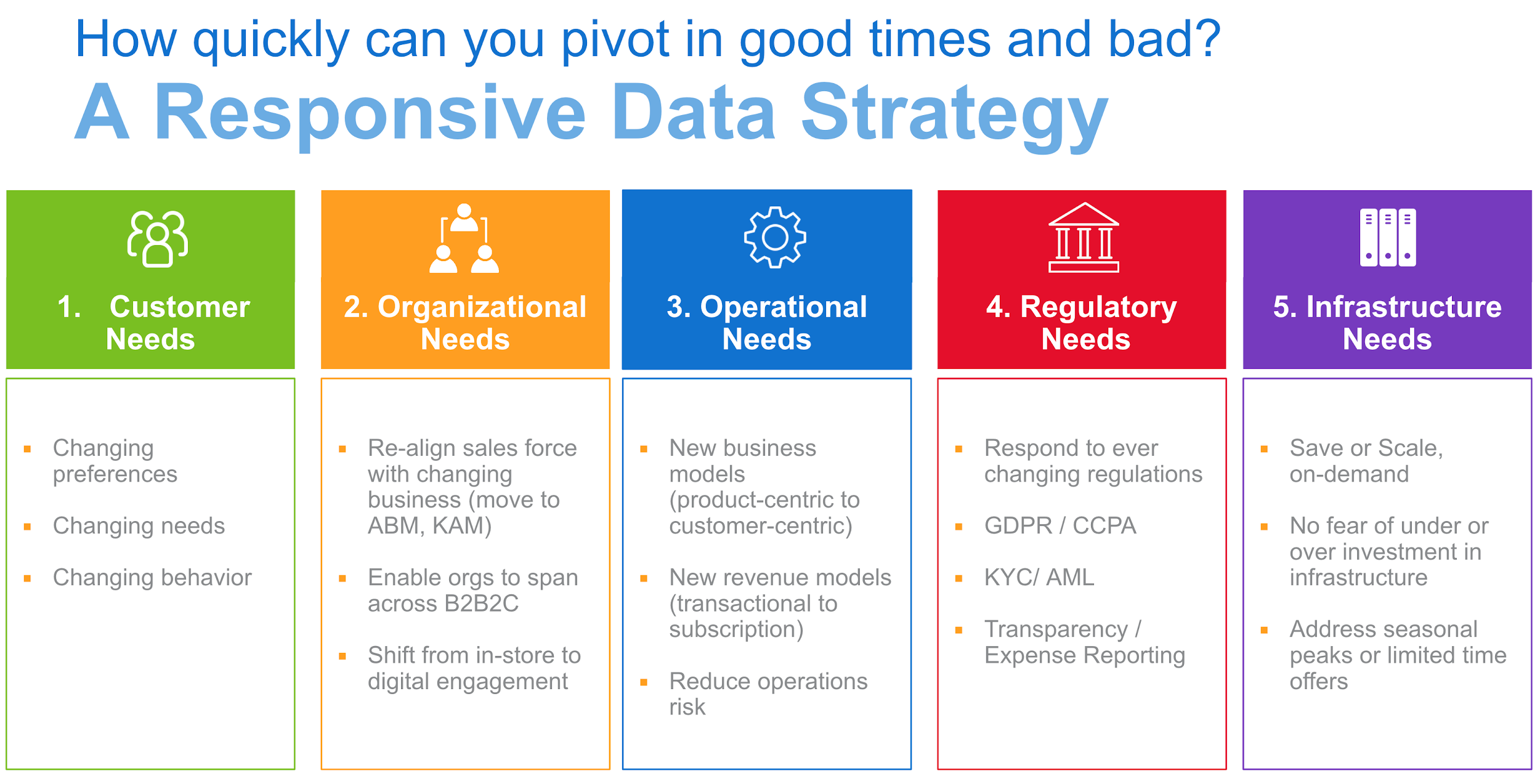A Responsive Data Strategy is Critical Now More Than Ever

A Responsive Data Strategy is Critical Now More Than Ever
As the market conditions evolve, Global 2000 companies need to pivot quickly to respond to changing business needs. Political, Environmental, Social, and Technological (PEST) trends frequently put companies in situations where they have to evolve their business models to address customer, competitive, or regulatory requirements. Companies that are resilient and responsive to the change not only survive, but they capitalize on the changes and thrive. Almost a year back, McKinsey published an article, “Bubbles pop, downturns stop.” The report demonstrates how resilient businesses did better during the downturns and after.

Invariably these companies have a better understanding of the forces that impact their business from operational factors to the customer experience. These organizations are digitally savvy and are data-driven.
So why do some organizations pivot quicker than the others? They have a responsive data management strategy and technology to power it. A Responsive Data Strategy enables even the most complex businesses to be resilient and agile in times of change because they can use data in new ways to pivot and adapt in good times and bad.
A responsive data strategy gives your business the agility and enables you to respond in five crucial ways:
- Responding to Customer Needs
Customers’ needs change. What they buy, how they buy, and where they buy from continuously evolves. Currently, we see a big rush to digital channels, accelerated by the recent pandemic. Organizations must bring all the customer data together to understand their behavior, needs, and intent and offer them personalized products or information when and where they need, and as those needs change, they must be able to adjust their business as well. - Restructuring the Organization
As new business models emerge, how quickly can your company reorganize the workforce? If your customers are moving to digital channels for shopping and support, can you promptly realign your workforce? Can you realign your sales team based on new product offerings or shift to an account-based management strategy? For a complex organization with thousands of sales reps, hundreds of products, and the global market, realignment can take six to nine months. Having access to rich, connected and real-time data about sales, customers, products, and territories can accelerate your ability to bring these new strategies to life by reducing planning time and increasing sales effectiveness. - Reimagining Operations
Responding to customer’s needs also requires adjusting or reengineering your operations. Companies such as Netflix have disrupted the market three times (DVD rentals via mail, streaming content, producing content), and each change required redesigning how they imagined and delivered their products to consumers. We have also seen how optimizing supply chains have helped organizations to serve customers during crises. Having accurate data about suppliers, understanding your exposure to suppliers, having an understanding of alternate suppliers have helped companies to respond to the market needs quickly. - Adapting to New Regulations
We live in a world where regulations are continuously changing. The need for data protection and privacy has led to regulations such as GDPR and CCPA. There are many others in works. Organizations must be able to respond quickly to these regulations. The ability to easily identify sensitive information, having the policies and procedures in place to address data access, change, and deletion requests for current and any future regulatory changes isn’t an easy task without a responsive data strategy. A comprehensive data strategy includes addressing such regulatory issues. - Realigning Data Infrastructure
Businesses often fear over or underinvesting in their data infrastructure. A responsive data infrastructure must scale during peak times, such as Black Friday, and can be scaled down during downturns. Cloud-native data management platforms support elasticity at each layer. Companies can use the burst capacities during data loads, or increase the ability to meet the seasonal needs without worrying about designing their infrastructure for peak capacities. A responsive data infrastructure saves and scales as business needs change.

Data leaders are under pressure to design their data strategies to tackle uncertainties and shifts in their business. Responsive data management technology can support such initiatives. Unlike slow, constrained and rigid legacy data platforms, they are agile and scalable to operationalize the responsive data strategy.
Watch the 30-minute On-Demand Webinar, The Data Leader’s Priority: Pivoting with a Responsive Data Strategy to learn how to build a Responsive Data Strategy.
